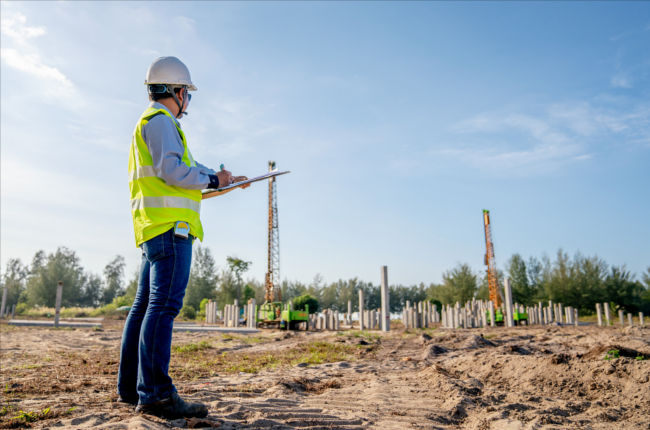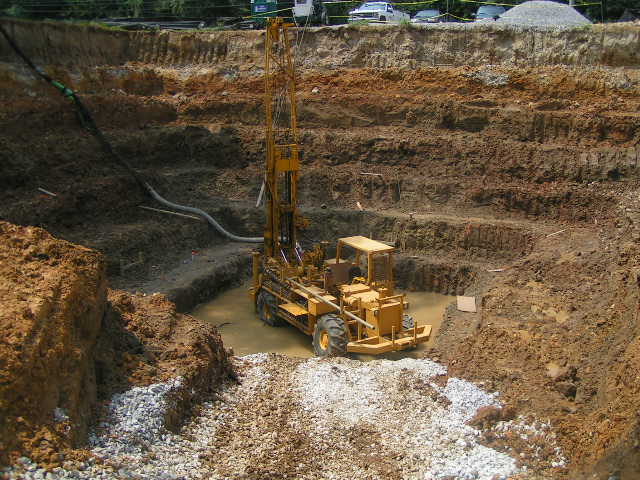Engineer of Record: What You Need to Learn About Their Obligations and Effect
Engineer of Record: What You Need to Learn About Their Obligations and Effect
Blog Article
Discovering the Cutting-edge Strategies and Technologies Shaping the Future of the Geotechnical Industry for Sustainable Engineering Solutions
The geotechnical market is going through a transformative shift, driven by ingenious techniques and innovations that highlight lasting design solutions. Advanced soil stabilization techniques, the usage of smart products, and the application of information analytics are redefining just how we come close to facilities challenges. As these developments promote eco-friendly stewardship, they likewise increase crucial questions concerning their functional implementation and long-term performance. Comprehending the interplay between these technologies and their prospective to transform the field welcomes additional exploration right into the future of lasting engineering techniques.
Advanced Soil Stablizing Techniques
Dirt stabilization is a vital procedure in geotechnical engineering, focused on enhancing the physical residential or commercial properties of dirt to improve its load-bearing ability and resilience. Advanced dirt stabilization methods play a crucial role in attending to challenges connected with unstable or weak dirts, therefore enabling risk-free and reliable construction methods.
Amongst the noticeable methods, chemical stabilization entails the use of additives such as lime, cement, or fly ash, which respond with dirt particles to form a much more natural mass. This strategy is particularly efficient in enhancing the toughness and wetness resistance of extensive clay dirts. Mechanical stablizing, on the various other hand, involves the physical alteration of soil residential properties via compaction or the consolidation of granular materials, causing boosted density and stability.
Another ingenious strategy is using geosynthetics, which provide reinforcement and minimize dirt disintegration while boosting water drainage. Strategies like dirt blending and deep dirt stablizing are likewise getting grip, permitting in-situ treatment of problematic dirts. Collectively, these sophisticated techniques not only enhance the performance of soil structures however likewise contribute to sustainable engineering practices by minimizing the need for extensive excavation and material transport.
Smart Products in Geotechnics
Technology goes to the center of geotechnical design, specifically with the unification of clever materials that improve the performance and performance of soil frameworks. Smart products, such as shape memory alloys, piezoelectric products, and self-healing polymers, are transforming the way designers come close to soil stablizing and facilities durability (tailings engineer). These materials can adjust to altering ecological problems, react to stress, and also repair themselves, significantly boosting the durability of geotechnical systems
As an example, piezoelectric products can generate electrical charges in feedback to mechanical anxiety, offering possible for real-time tracking of dirt conditions and architectural stability. Self-healing products can autonomously fix problems and cracks, reducing maintenance prices and prolonging the life-span of geotechnical assets. The assimilation of these smart products not only improves the mechanical residential properties of soil however also adds to lasting engineering methods by minimizing resource intake and environmental influence.
As the geotechnical industry remains to progress, the fostering of wise materials will play a crucial duty in establishing innovative services, making certain that infrastructures are not just durable yet also adaptable to future obstacles. This transformative strategy is poised to redefine the criteria of safety and performance in geotechnical engineering.
Data Analytics for Framework
The assimilation of smart materials in geotechnical design has actually paved the method for innovative methodologies, particularly in the realm of data analytics for facilities. This cutting-edge approach leverages substantial data collection and analytical methods to boost decision-making processes throughout the facilities lifecycle. By using sensing units embedded in wise products, designers can continuously check crucial specifications such as soil stability, moisture degrees, and architectural honesty.
Information analytics allows the change of raw data into workable understandings, enabling for predictive maintenance and boosted threat administration. Advanced algorithms and device knowing techniques facilitate the recognition of patterns and abnormalities, which can enhance and notify timely treatments source allowance. Furthermore, integrating geographic information systems (GIS) boosts spatial evaluation, additional enhancing the decision-making structure.
By utilizing the power of information analytics, the geotechnical sector is placed to not only enhance current methods but also leader cutting-edge services for future framework challenges. This harmony of technology and design principles will certainly define the future of lasting infrastructure development.

Sustainable Ground Enhancement Methods
Various sustainable ground improvement approaches are becoming essential solutions to address the challenges of geotechnical engineering while decreasing environmental impact. These techniques not just boost dirt performance however additionally advertise environmental stewardship by lowering reliance on standard, much more intrusive techniques.

An additional innovative approach is the application of geosynthetics, that includes eco-friendly materials that enhance soil while advertising water drainage and erosion control - tailings engineer. This lowers the requirement for hefty machinery and lessens website disturbance, therefore maintaining local ecological communities
Additionally, strategies such as dynamic compaction and vibro-replacement have progressed to include sustainable methods, incorporating recycled materials and reducing carbon footprints. These techniques exhibit the sector's shift towards more ecologically responsible services, making sure that ground improvement not only satisfies design requirements but likewise adds positively to the surrounding atmosphere.
Innovations in Ecological Monitoring
Over the last few years, developments in ecological surveillance have dramatically enhanced the capability to evaluate and take care of geotechnical projects with very little eco-friendly interruption. Ingenious modern technologies, such as remote picking up, Net of Things (IoT) devices, and real-time information analytics, are transforming exactly how environmental effects are determined and alleviated.
Remote noticing innovations, consisting of satellite images and air-borne LiDAR, facilitate the quick assessment of land use adjustments and ecological problems - geotechnical engineers. These tools enable constant surveillance of websites, making it possible for designers to determine prospective problems prior to they rise. In addition, IoT tools, equipped with sensing units for criteria like soil temperature, dampness, and gas emissions, provide real-time data streams that boost the understanding of site-specific ecological variables
Real-time data analytics better fine-tune decision-making processes by incorporating data from numerous sources, allowing for aggressive administration techniques. This all natural technique not only ensures conformity with environmental laws however additionally promotes lasting methods within the geotechnical sector.
As these advancements remain to advance, they hold the potential to link the space in between engineering purposes and environmental stewardship, cultivating a much more lasting future for geotechnical projects worldwide.
Verdict
Advanced dirt stabilization methods, the assimilation of smart materials, and the application of data analytics collectively improve the durability and effectiveness of framework. These advancements not only address modern design obstacles but also pave the method for a much more sustainable future in geotechnical methods.
Strategies like soil mixing and deep soil stablizing are additionally getting grip, allowing for in-situ treatment of problematic dirts. Jointly, these sophisticated methods not only boost the efficiency of soil frameworks yet additionally contribute to lasting design techniques by decreasing the requirement for considerable excavation and product geo tech engineer transportation.

Report this page